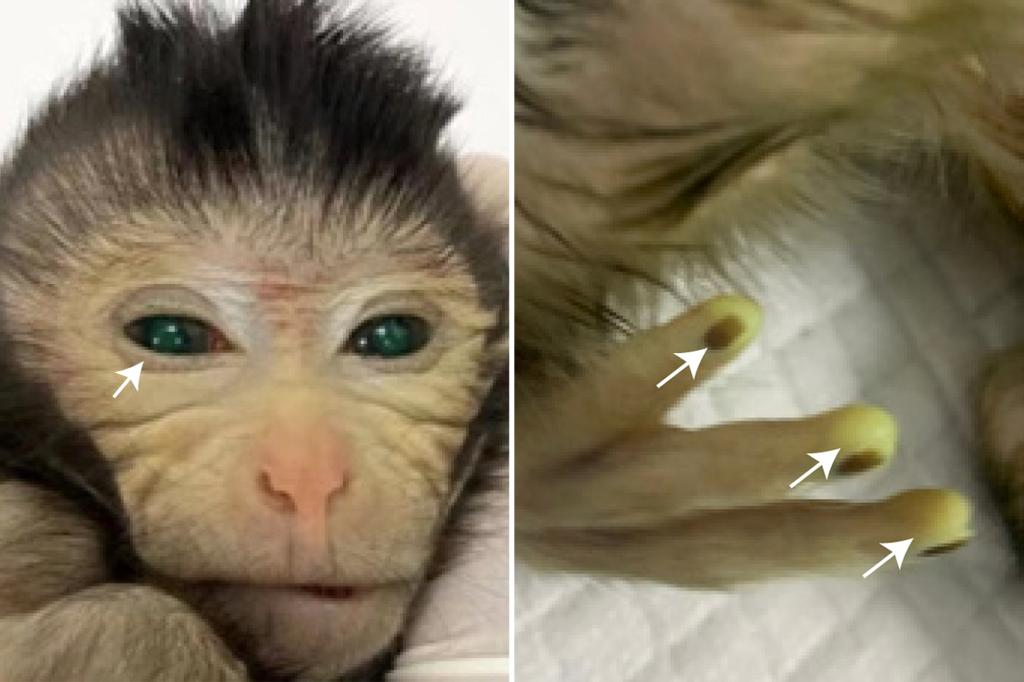Scientists in China have recorded the first live birth of a chimeric monkey using stem cells. The baby ape sports bright green eyes and fingertips, according to a new study.
Researchers from the Chinese Academy of Sciences published their findings in Cell on Thursday, noting that the monkey was created from two genetically distinct embryos of Cynomolgus monkeys, also known as cynomolgus macaques.
The researchers had applied a green fluorescent protein to the test subjects to highlight which tissues had specifically grown from stem cells taken from 7-day-old embryos.
The result was the baby monkey’s fluorescent green eyes and fingers. Scientists touted it as the first live birth of a primate chimera using stem cells.
Unfortunately, the monkey lived only 10 days before being euthanized.
The first live birth of a chimeric monkey using stem cells featured fluorescent green eyes. Ciao et al/CELL The monkey also had fluorescent green fingers. Ciao et al/CELL
Zhen Liu, lead author of the study, said the successful birth of the monkey has big implications for stem cell research involving other primates, including humans.
“Specifically, this work could help us generate more accurate monkey models for studying neurological diseases, as well as for other biomedical studies.”
Liu added that the research has implications for more precise genetic engineering and species conservation among primates.
The green parts of the ape’s body highlighted which tissues grew from stem cells. Ciao et al/CELL
“Monkey chimeras also have enormous potential value for species conservation if they could be achieved between two types of non-human primate species, one of which is in danger of extinction,” said Miguel Esteban, principal investigator at the Institute of Biomedicine. and Guangzhou Health and study investigator. he told CNN.
“If donated cells from endangered species contribute to the germline, one could imagine that through reproduction animals of these species could be produced.”
Following their success, scientists at the Chinese Academy of Sciences said they hope to study how embryos survive during pregnancy and find ways to improve their line of chimera monkeys.
During their work, the researchers recorded 12 pregnancies among female macaques, followed by six live births.
The baby ape featured in the project was the only one that exhibited the desired traits, and the only other chimeric ape died as a fetus due to a miscarriage.
Categories: Trending
Source: vtt.edu.vn
